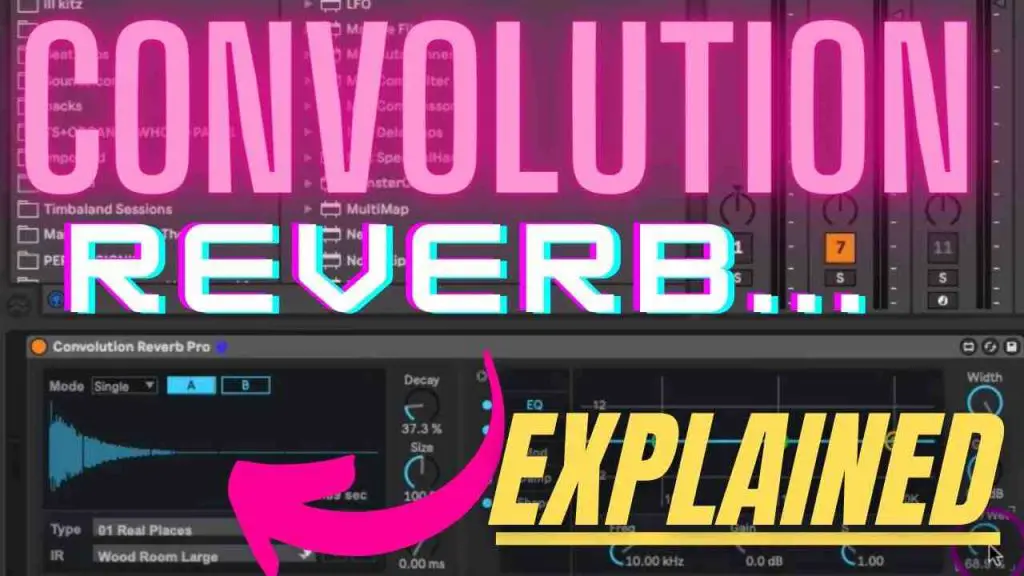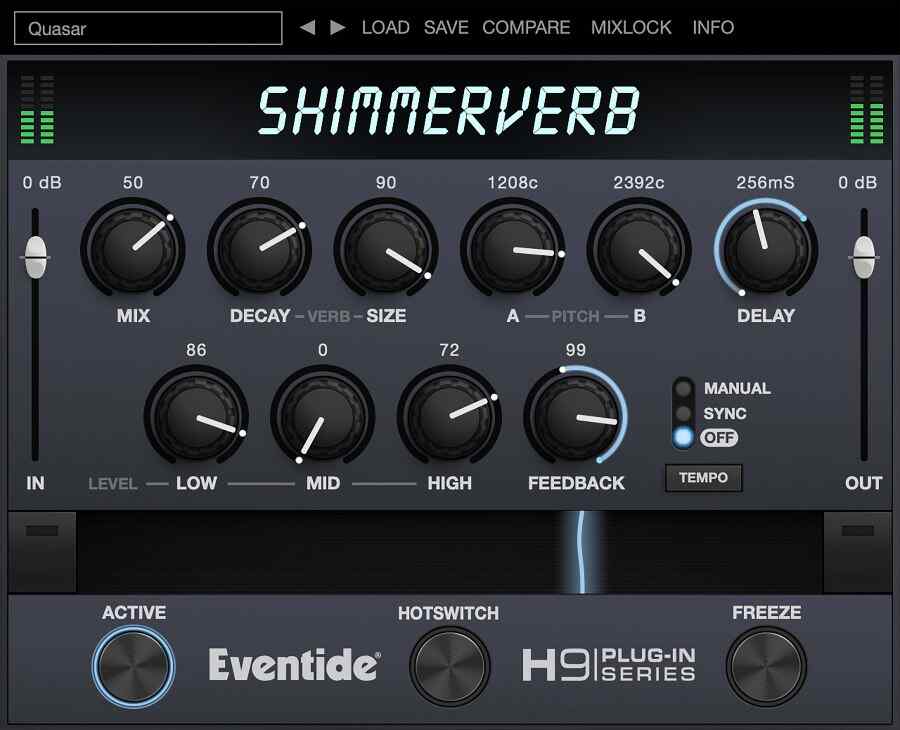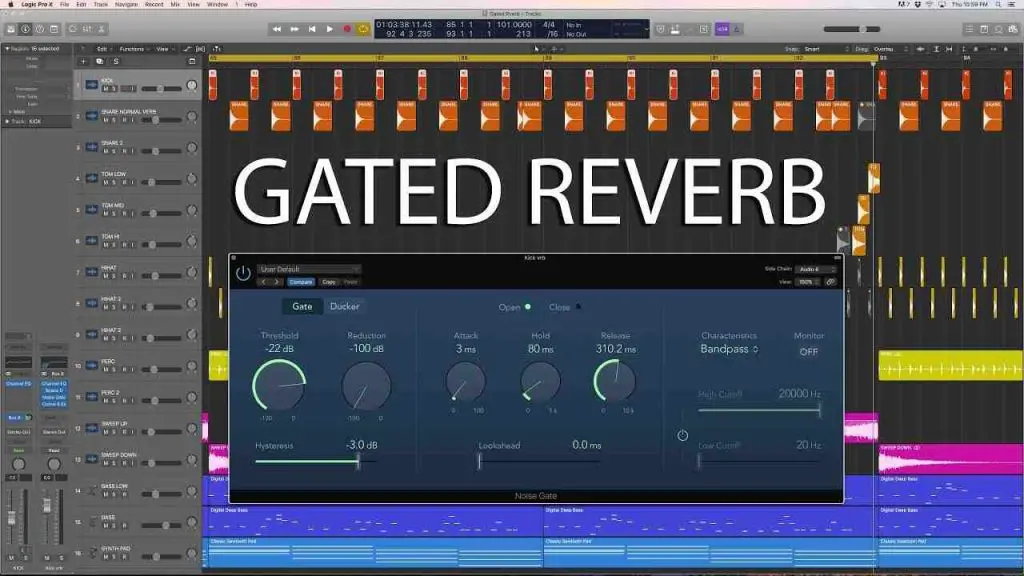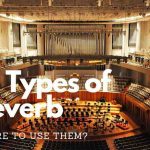How many types of reverb actually exist? The answer to that question is highly contentious. Over the past few decades, there has been a lot of chatter and debate in music circles about the precise number of reverbs that exist in the sonic sphere.
While the generally accepted view is that there are 3 types of reverb categories, the actual number of reverbs under each category leads to a heated debate. Some argue that there are 5 reverbs in total, others peg the number at 7.
While a few consider those numbers to be incomplete and propose there are more than 10 types of reverb. We reckon there are 12 types of reverb at present that are created acoustically, mechanically via electronics, and via digital algorithms.
Reverbs can be primarily classified into 3 main categories namely, Acoustic, Mechanical and Digital. We will get into the nitty-gritties of each reverb type below.
Table of Contents
The 12 Types of Reverb

Type 1: Acoustic Reverbs
Acoustic reverbs are the original reverbs that emit the sounds or reverberations of rooms of various sizes. Remember, the size, shape, and material of the walls can affect the characteristics of the reverb.
The first reverb effects were created in the 1930s by playing audio recording in large spaces via loudspeakers and then recording the reverberated sound.
Some recording studios in the olden days resorted to wooden flooring to create their own custom reverb rooms.
There are 5 types of Acoustic Reverbs
ROOM REVERB
As the name implies, Room Reverbs refer to recordings of reverberation emanating from small rooms such as a bedroom or living room.
Room reverbs have a short decay time or reverb tail of approx. 0.75 seconds duration. Room reverbs are known for their high density of echoes and early reflections that add coloration to an audio track.
In other words, Room reverbs can boost your audio/instrument track’s low and mid range frequencies.
You can attenuate these frequencies with an EQ or throw a compressor in the signal chain before the room reverb kicks in.
Room Reverbs are used predominantly with instruments such as drums, rhythm guitars.
CHAMBER REVERB
A Chamber reverb is a special type of reverberation that is created in large chambers by recording studios with a massive budget and space.
Usually, such recording studios build an exclusive chamber just for creating the lush chamber reverb sound.
Chamber reverbs have a less amount of coloration as opposed to room reverbs and sound more authentic and realistic.
The prime focus of a good chamber reverb is maintaining the thickness of the reverb tail as it keeps the early reflections of reverberated sound sparse and thinner.
As expected Chamber reverbs involve a lot less post-processing work and are quite easy to use.
You can use this type of reverb on lead guitar tracks, vocals, bass guitar, and other instrument tracks that generally sit in the center of the mix.
HALL REVERB
Hall reverb is symbolic of a big space or concert hall’s reverberation that has a naturally pleasing acoustic environment. Hall Reverbs are known for their long decay tails up to 2 seconds of duration and a tiny amount of pre-delay.
A Hall reverb tail’s density swells instead of building up in the early reflections leading to a build up kind of wall of sound.
Hall Reverbs are typically used on rock ballads with lots of strings and arrangements, orchestral music, solo piano or arena rock songs with an unholy amount of of gang chant vocals.
CATHEDRAL REVERB
Cathedral Reverbs comprise a long reverb tail with a wet hall reverb sound.
Since Cathedrals are highly reflective due to their rectangular and square shaped architectural design, they tend to have a longer decay time up to 10 seconds.
Chamber reverbs tend to be very light in intensity on the early reflections, however, the intensity builds up when the reverb tails start kicking in.
Please note that stadium or arena reverbs are similar to cathedral reverbs in principle, however, they have a slapback delay added.
Cathedral reverb should not be applied to high BPM (Beats per minute) or fast tempo songs since they can instantly ruin the mix’s vibe and make the instruments sound convoluted.
Instead you can use this reverb on songs which are slow tempo with a lot of room for phrasing and ambience.
You can also use Cathedral reverbs in slow orchestral tracks, or slow rock ballads.
AMBIENCE REVERB
Ambience Reverbs are known for their relatively short decay reverb tails of approx. 0.4 seconds duration. Hence, ambience Reverb has a lot of early reflections that are intrinsic to the original sound.
If you apply an Ambience Reverb to your guitar track you won’t be able to instantly discern if a reverb has been applied to the signal chain due to a very small amount of coloration being added by the reverb.
However, ambience reverbs are used on bus tracks (in DAWs) which are common groups of individual tracks of an instrument.
For instance a drum bus track will have a snare, hi hat, kick, cymbal, toms, tracks that are all routed to a Drum Bus Track.
You can add an ambient reverb to either the individual tracks or the bus track to add subtle coloration.
Adding an ambient Reverb to a Drum bus track makes the entire drum kit and individual instruments sound cohesive and tight-knit as if they were all recorded in the same environment.
Type 2: Mechanical Reverbs
Mechanical reverbs refer to two types of reverb, namely, Spring Reverb and Plate Reverb.
Mechanical Reverbs allow users to create a reverberation effect without needing an entire room to do it. They also offer some room for sound tweakage.
A popular example of a mechanical reverb is the Abbey Road Studios’ EMT 140.
2 types of Mechanical Reverbs
PLATE REVERB
Plate reverbs are created by vibrating a metal plate with a transducer and recording the resultant reverberation.
Plate reverbs are known to have a high-intensity fast attack with early reflections and can have short, medium, or long decay times or reverb tails.
If you are looking for a dark reverb sound with rich, ambient and melodic atmospherics, Plate Reverbs are the best fit.
Some notable bands that have used plate reverbs on their albums include Pink Floyd, Led Zeppelin, to name a few.
SPRING REVERB
Spring reverbs are created by vibrating a metallic spring and then recording the resultant vibration. Spring Reverbs have a bouncy metallic sound that is often described as bright.
Physical springs were a staple of vintage tube guitar amplifiers, however, nowadays they are now rarely found in modern tube amps.
Somewhat similar to plate reverbs, Spring reverbs are known to have a short to medium length decay time.
Mechanical metallic springs in tube amps have had problems related with their movement.
For instance, traditional springs in tube amps have this loud thud sound problem when the guitar volume is cranked to the max.
However, digital spring reverbs or spring reverb vst plugins have eliminated that issue.
Type 3: Digital Reverbs
Digital reverbs are emulations or digital replicas of all of the above types of reverb. Digital reverbs are created by tweaking samples of sounds recorded in natural environments and/or computer algorithms.
Some of the most popular types of reverb under this category are available in the form of VST/AU plugins that can be imported into a digital audio workstation or DAW, reverb effects pedals, and inbuilt synth modules.
Digital reverbs can be further classified into 5 types of reverb namely: Convolution Reverb, Shimmer Reverb, Gated Reverb, Reverse Reverb and Non-Linear reverb.
There are 5 types of Digital Reverbs
CONVOLUTION REVERB

Convolution reverbs comprise the actual recording of natural acoustic spaces in the form of an impulse response (or IR).
These impulse responses are then analyzed to create a frequency profile of them and then a computer algorithm simulates the natural environment’s reverberation in a digital plugin or IR file format.
Users can edit the convolution reverb by choosing a different impulse response of a natural space and modify the sound of the altered impulse response as per taste.
Convolution Reverbs and the usage of impulse responses are quite steadily increasing in guitar driven music as they provide a great alternative to expensive tube amps and lots of studio grade reverb sound effects.
SHIMMER REVERB

Shimmer verbs, as the name suggests, are bright reverbs since they derive their sound from being passed through one or more pitch shifters.
In other words, a shimmer reverb is a normal reverb that is pitched up an octave to accentuate the high range or higher frequencies in the frequency spectrum.
Think of passing a normal reverb through an aural exciter plugin to brighten up the sound.
A great example of the usage of shimmer reverbs is the Rush song “The speed of Love”. The shimmer reverb on this rock song was created likely by an analog Digitech TSR-24 or IPS-33b.
Other notable examples include the Black Keys’ song “The Go Better” and the live versions of “With or Without You” by rock band U2.
Shimmer reverbs are usually added to ethereal samples, and synthesizer pads. You can also use it with a Chorus effect on your guitar’s signal chain although the resultant guitar sound could be a tad too bright.
GATED REVERB

Gated reverbs share somewhat similar characteristics to chamber and room reverb insofar as coloration is concerned, however, Gated Reverbs have a much longer decay time leaving a bit of reverb tail.
As the name suggests, Gated Reverbs are then passed through a noise gate that abruptly cuts off the reverb tail before it naturally crashes down to zero amplitude.
Gated Reverbs are notably used on Drums especially snare drum tracks and were popular in the 1980s genres such as Synthwave.
A recent popular song that uses Gated Reverb is Midnight City by M83.
NON-LINEAR REVERB
A Non-linear reverb is a relatively new kind of reverb that can be defined as a reverb that is artificially mangled or created out of a normal reverb in that the decay time is non-linear.
Hence, in that sense, a gated verb can also be defined as a non-linear reverb. However, non-linear reverbs are created in a different way than gated reverbs.
Instead of using a compressor on a reverb and then passing it through a noise gate, Non-Linear reverbs are created with short diffusers and multitap delays.
REVERSE REVERB
Rounding up this extensive list of various types of reverb is Reverse Reverb. This kind of reverb is created by reversing the reverb tail that gradually rises in volume and moves to occur before the instrument kicks in.
Many recording studios in the pre-digital audio era had to manually replicate the reverse reverb sound by playing a tap in reverse and then re-recording it.
The reverse reverb can be heard on popular rock and metal songs such as Blue Oyster Cult by Blue Oyster Cult, metal band Sepultera’s Arise, Loveless by shoegaze band My Bloody Valentine, Bron-Yr-Aur by Led Zeppelin and Even Flow by grunge band Pearl Jam.
In more mainstream music, Reverse Reverb was used in sci-fi, horror, and fantasy movies.
Various Types of Reverb: Conclusion
We hope that we were able to clear your doubts about different types of reverb. You can try out any of these reverbs in your music compositions.
Although digital reverbs will be easier to use since they come with presets and Impulse responses of natural spaces.
You can let your creativity run wild and combine various types of reverb mentioned above to create a truly custom sound. We would love to hear how your experiments go with those lush ambient reverb sounds!
FAQs: Different Types of Reverb
How many types of Amp Reverbs are there?

There are 5 types of tube amp reverbs namely: hall, chamber, room, plate and spring. However, digital amp emulations in the form of VST/AU plugins have up to 12 types of reverb.
Some of these are: hall, chamber, room, plate, spring, shimmer reverb, non-linear reverb, ambience reverb, reverse reverb, convolution reverb and gated reverb.
Is Reverb a type of Delay?

Technically, reverb is similar to delay in that it is a time-based repeating effect.
However, the main difference is that reverb emulates the sound waves or reverberations reflecting in a room or a natural space.
Also, reverbs have a long sustenance and ambience associated with them. It is something that Delays do not have.
Delays start after a certain amount of time and last until a certain number of seconds.

